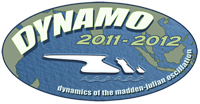

|
Summary of Matlab Routines |
Gan, Maldives
|
Almost all routines show examples for use in the source code. This text provides a short summary of each routine.
AntPerf.fig
AntPerf.m
PID_fraction.m
PID_readback_plot.m
determine_radar_fields.mget_hdf5_param_atts before using this routine.
get_and_scale_hdf5_data.mget_hdf5_param_atts before using this routine.
get_hdf5_param_atts.m
get_scan_daysecs.mmain_timeline_multi_plot.
get_sorted_file_list.mmain_timeline_multi_plot,
and by several other routines..
get_time_from_fname.mmain_timeline_multi_plot routine to determine
times of DORADE files.
get_unscaled_hdf5_data.m
get_unscaled_nc_data.m
label_timeline_axes.m
main_bscan.m
main_timeline_multi_plot.m
myXtickResize.m
nc_radar_read.m
plot_pointing_info.m
read_pointing_info_h5.mh5read
run_antenna_plots.m
select_files.muigetfile to select files, then structures those
filenames in an array for use by other routines.
select_params.m
start_antenna_plots.mplot_pointing_info
code. Allows selection of filenames and iteration through the selected files.
zdr_bias_dynamo.m